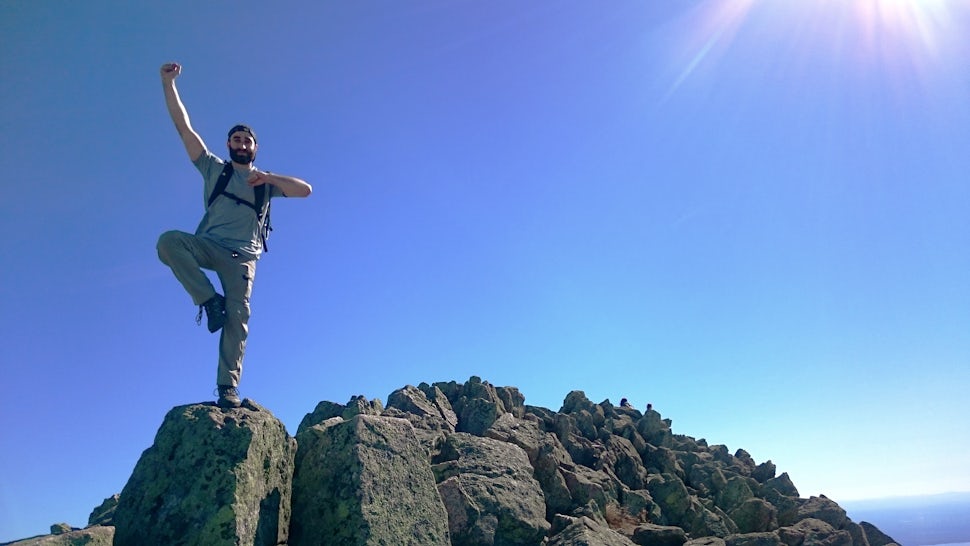Choosing Your Own Adventure
How planning correctly can help you push the boundaries of limitation

Choosing your own adventure is simultaneously overwhelming and exhilarating. The training, logistics, stocking up on gear and supplies, booking flights, and scanning weather reports can really put into focus how the entire operation balances so delicately on the precipice of failure! It is reasonable to surmise that enthusiasm wavers when planning carefully is concerned. Coupling the task with a sense of purpose, however, can spark an overwhelming drive to put up with the meticulous and mundane. This moment truly highlights the reasons why you're doing this in the first place.
 Silfra - Iceland
Silfra - IcelandSo, let’s dig into the “why” factor. Embracing the many wonders and elements of nature seems like a logical place to start. Fantasizing about breath-taking viewpoints, the challenging trails, the secret swimming spots, and the exotic flora and fauna can be enough to quell the doubts and nerves of a blossoming adventurer. That feeling of excitement; the anticipation of breaking the rhythm we’ve all grown so accustomed to in our day-to-day, is liberating and downright awesome!
 Kalalau Trail - Kaua'i
Kalalau Trail - Kaua'i That being said, nothing worth doing is easy. Thoroughly researching every variable, selecting and training with the appropriate gear, and picking the right traveling companions are paramount to the success, and in many cases, the safety of your next adventure. When it comes to planning something as simple as a weekend in the mountains, here’s a few important factors that need to be defined:
- What are your trip objectives?
- This not only describes the destination, route or way of travel, and location of every camp - it defines arrival and departure dates, and lets third parties, such as family, friends, and local authorities know where you are and what you're doing in the event that an emergency situation should occur. It also defines what gear, food, supplies, and necessary training should be considered beforehand.
- What are the Environment and route conditions?
- Considering the difficulty rating and potential hazards that could occur along the way will help one prepare for the challenges ahead. Information like weather forecasts, exposure points, extreme temperatures or elevation gain is all available online or at a forest ranger station. It is always good practice to call ahead before starting - some information may be reported online.
- What resources are available?
- Knowledge of resources such as rivers, wells, or other water sources could mean avoiding dehydration and reducing pack weight by carrying less water. Bring a filter or a small lightweight pot to boil water in!
- In case the weather does decide to take a turn for the worse, as it sometimes does, knowing the location of natural or man-made shelters along the way could keep you safe, dry, warm or cool.
- What kind of insect or wildlife is active?
- This is a big one: take the proper precautions for insects and wildlife that are native to your area. A good example would be using a bear-proof barrel for storing food and toiletries, avoiding tick-heavy areas, murky swamp water (gators), and other similar hazards.
- If the weather is hot, sweating off bug spray will render it ineffective. Clothing such as a light-long sleeve nylon shirt and pants prevent most insect bites. Mosquito head netting with a hat is also a huge bonus that prevents mosquitos, black-flies and moths from flying into your face.
- Be sure to ask a ranger or park authority about wildlife activity prior to your trip. You might be surprised! (Did you know that during rutting season, a male Moose is the most dangerous North American mammal?)
- Who can I contact for help?
- Have a friend or relative know exactly where you are going to be, where you plan on going, and how long they should wait to hear from you before contacting a park or local authority.
- Remoteness is a factor that should be considered very seriously. Hiking a mountain that is also a ski-area means that there are roads nearby and that help is not far away. However, hiking a mountain that is buried deep in the backcountry is an entirely different story.
- Knowing where to go in case something goes wrong is important, but knowing WHEN to go, to prevent something from going wrong, is the one of the best instincts to develop.
 Wittenberg, NY
Wittenberg, NY Taking the time to factor in the above details is an immense contribution to the amount of fun that can be had on an adventure. That's what we're trying to do after all! Reducing the "unknown" factors alleviates the stress of being unprepared and maximizes the joy-points of the experience, overall.
- Theodore Roosevelt
We want to acknowledge and thank the past, present, and future generations of all Native Nations and Indigenous Peoples whose ancestral lands we travel, explore, and play on. Always practice Leave No Trace ethics on your adventures and follow local regulations. Please explore responsibly!
Do you love the outdoors?
Yep, us too. That's why we send you the best local adventures, stories, and expert advice, right to your inbox.








